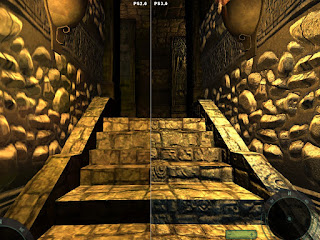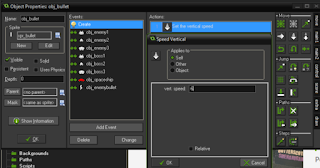Unit 6: Critical approaches to creative media products
Task 1
Title: DayZ
Genre: Multiplayer, Survival Horror, First Person Shooter, Sandbox
Selection of Content: Post Apocolyptic, Exploration
Construction of Content: Co Op and competitive multiplayer.
Narrative Conventions: No real story, make a story as you play
Codes and Conventions: Health, ammo, hunger and hydration levels, limited inventory space. cooperate with other players or fight against them
Target Demographic: Young adults
Title: Call of Duty: Black Ops 2 (Zombies)
Genre: First Person Shooter, Co Op multiplayer, survival horror
Selection of Content: Post Apocolyptic, Endless, Generally dark
Construction of Content: Gameplay driven, obscure story
Narrative Conventions: Survival, live as long as possible, Hidden story discovered through obscure secrets
Codes and Conventions: Round based, Regenerating Health, Perks, Ammo, No ending
Target Demographic: young adults to adults (18-30)
Title: Killer Klowns from Outer Space
Genre: First Person Shooter, Survival horror, Stealth
Selection of Content: Exploration Based, abandoned locations, invasions.
Construction of Content: Linear
Narrative Conventions: Alien Klowns have invaded Earth
Codes and Conventions: Health, ammo, melee combat, stealth
Target Demographic: Young adults to adults 16+ (Including fans of the original movie)
Task 2
Media Text: Media text is different forms of media that can be used as advertisements for the game such as posters, trailers and ads in a newspaper or magazine. The effectiveness of these ads depends on the type of advertisement and the location of the ad, for example with Call of Duty it is a big franchise so there would be a lot of advertisements in places where people are more likely to see them such as posters and trailers online and on TV. DayZ mainly relied on trailers to represent itself as it isn't as accessible as Call of Duty and has a smaller fanbase in general, most of which would be on the internet a lot which is a common place for ads, for My game if it was a bigger game that would be published by a big company I would use primarily trailers and posters ad there would be seen by a big amount of people.
Genre: Game genres are styles of games that vary from each other in terms of gameplay which creates different experiences for example a first person shooter is vastly different from a 2D platformer as one takes place in a first person point of view whilst the other is viewed from the side, they each have different objectives with 2D platformers it's usually to reach the end of the level whilst shooters will generally involve a specific objective such as getting more kills than the enemies or killing a specific enemy. The two example games I used as well as my own game are all shooters however Day Z can switch between first and third person and is also a sandbox. Black Ops 2 Zombies is a mix of shooter and survival horror whilst my game is a first person shooter with elements of stealth.
Selection of Content: The selection of content consists of the main assets in the game such as graphics, sounds, sequences and fonts. These 3 games all have a similar theme, being post apocolyptic. Call of Duty and DayZ both take place after the main damage has been done but my game will take place at the very beginning as the goal will be to stop the Klowns causing an apocolypse. The sounds of all of these games consist of eerie sounds to give more atmosphere such as zombie groans(or klown laughs in the case of my game), weather such as thunder or rain and wind blowing the trees around. In terms of graphics the games all have a photo realistic style to them to help add to the horror aspect as a cartoony style would degrade from that.
Construction of Content: This is the way the game is set out, for example DayZ is an online multiplayer game with a big open world to explore and no story to follow, you are essentially making up the story yourself. The Zombies mode in Call of Duty consists of an endless amount of waves of zombies to survive, this can b e done either solo or with up to 3 more players, there is a story but it isn't told through normal gameplay but is instead found through secrets in the map that are only hinted at by some very minor dialogue which is easily missed by most players however it is not needed to fully enjoy the game. My game will be fairly linear and will have the player simply move from point A to point B in one piece, the story will be told through cutscenes.
Codes and Conventions: These can be subgenres of games such as first and third person, they also include things such as the HUD (Heads Up Display) for example in Call of Duty Black Ops 2's Zombie mode the HUD is very minimalist with it only directly showing your points, ammo and the wave that you are on. Things such as health can only be determined by the amount of blood on the borders of your screen, the more blood visible, the lower your health is. In DayZ the HUD only shows what you have in your hands, the rest is within the inventory screen such as your ammo, hydration levels and hunger levels. when losing health the screen will turn black and white and eventually will go to a black screen when your character is dead or unconscious. The HUD in my game will be simple and easy to recognise, it will include a green health bar and an ammo counter.
Target Demographic: The target demographic for a game is the type of person or age group that the game is aimed at and will get the most enjoyment out of it. The target demographic for Day Z was young adults to adults (18+) whereas Call of Duty was seemingly aimed more at teenagers to adults (despite the age rating of 18+ many people younger than 18 are known to play the game and seem to be the majority of the playerbase). My game is aimed at mainly teenagers to young adults(16+) but fans of the original movie may also get some enjoyment from the game.
Codes and Conventions: Round based, Regenerating Health, Perks, Ammo, No ending
Target Demographic: young adults to adults (18-30)
Title: Killer Klowns from Outer Space
Genre: First Person Shooter, Survival horror, Stealth
Selection of Content: Exploration Based, abandoned locations, invasions.
Construction of Content: Linear
Narrative Conventions: Alien Klowns have invaded Earth
Codes and Conventions: Health, ammo, melee combat, stealth
Target Demographic: Young adults to adults 16+ (Including fans of the original movie)
Task 2
Media Text: Media text is different forms of media that can be used as advertisements for the game such as posters, trailers and ads in a newspaper or magazine. The effectiveness of these ads depends on the type of advertisement and the location of the ad, for example with Call of Duty it is a big franchise so there would be a lot of advertisements in places where people are more likely to see them such as posters and trailers online and on TV. DayZ mainly relied on trailers to represent itself as it isn't as accessible as Call of Duty and has a smaller fanbase in general, most of which would be on the internet a lot which is a common place for ads, for My game if it was a bigger game that would be published by a big company I would use primarily trailers and posters ad there would be seen by a big amount of people.
Genre: Game genres are styles of games that vary from each other in terms of gameplay which creates different experiences for example a first person shooter is vastly different from a 2D platformer as one takes place in a first person point of view whilst the other is viewed from the side, they each have different objectives with 2D platformers it's usually to reach the end of the level whilst shooters will generally involve a specific objective such as getting more kills than the enemies or killing a specific enemy. The two example games I used as well as my own game are all shooters however Day Z can switch between first and third person and is also a sandbox. Black Ops 2 Zombies is a mix of shooter and survival horror whilst my game is a first person shooter with elements of stealth.
Selection of Content: The selection of content consists of the main assets in the game such as graphics, sounds, sequences and fonts. These 3 games all have a similar theme, being post apocolyptic. Call of Duty and DayZ both take place after the main damage has been done but my game will take place at the very beginning as the goal will be to stop the Klowns causing an apocolypse. The sounds of all of these games consist of eerie sounds to give more atmosphere such as zombie groans(or klown laughs in the case of my game), weather such as thunder or rain and wind blowing the trees around. In terms of graphics the games all have a photo realistic style to them to help add to the horror aspect as a cartoony style would degrade from that.
Construction of Content: This is the way the game is set out, for example DayZ is an online multiplayer game with a big open world to explore and no story to follow, you are essentially making up the story yourself. The Zombies mode in Call of Duty consists of an endless amount of waves of zombies to survive, this can b e done either solo or with up to 3 more players, there is a story but it isn't told through normal gameplay but is instead found through secrets in the map that are only hinted at by some very minor dialogue which is easily missed by most players however it is not needed to fully enjoy the game. My game will be fairly linear and will have the player simply move from point A to point B in one piece, the story will be told through cutscenes.
Codes and Conventions: These can be subgenres of games such as first and third person, they also include things such as the HUD (Heads Up Display) for example in Call of Duty Black Ops 2's Zombie mode the HUD is very minimalist with it only directly showing your points, ammo and the wave that you are on. Things such as health can only be determined by the amount of blood on the borders of your screen, the more blood visible, the lower your health is. In DayZ the HUD only shows what you have in your hands, the rest is within the inventory screen such as your ammo, hydration levels and hunger levels. when losing health the screen will turn black and white and eventually will go to a black screen when your character is dead or unconscious. The HUD in my game will be simple and easy to recognise, it will include a green health bar and an ammo counter.
Target Demographic: The target demographic for a game is the type of person or age group that the game is aimed at and will get the most enjoyment out of it. The target demographic for Day Z was young adults to adults (18+) whereas Call of Duty was seemingly aimed more at teenagers to adults (despite the age rating of 18+ many people younger than 18 are known to play the game and seem to be the majority of the playerbase). My game is aimed at mainly teenagers to young adults(16+) but fans of the original movie may also get some enjoyment from the game.




















































